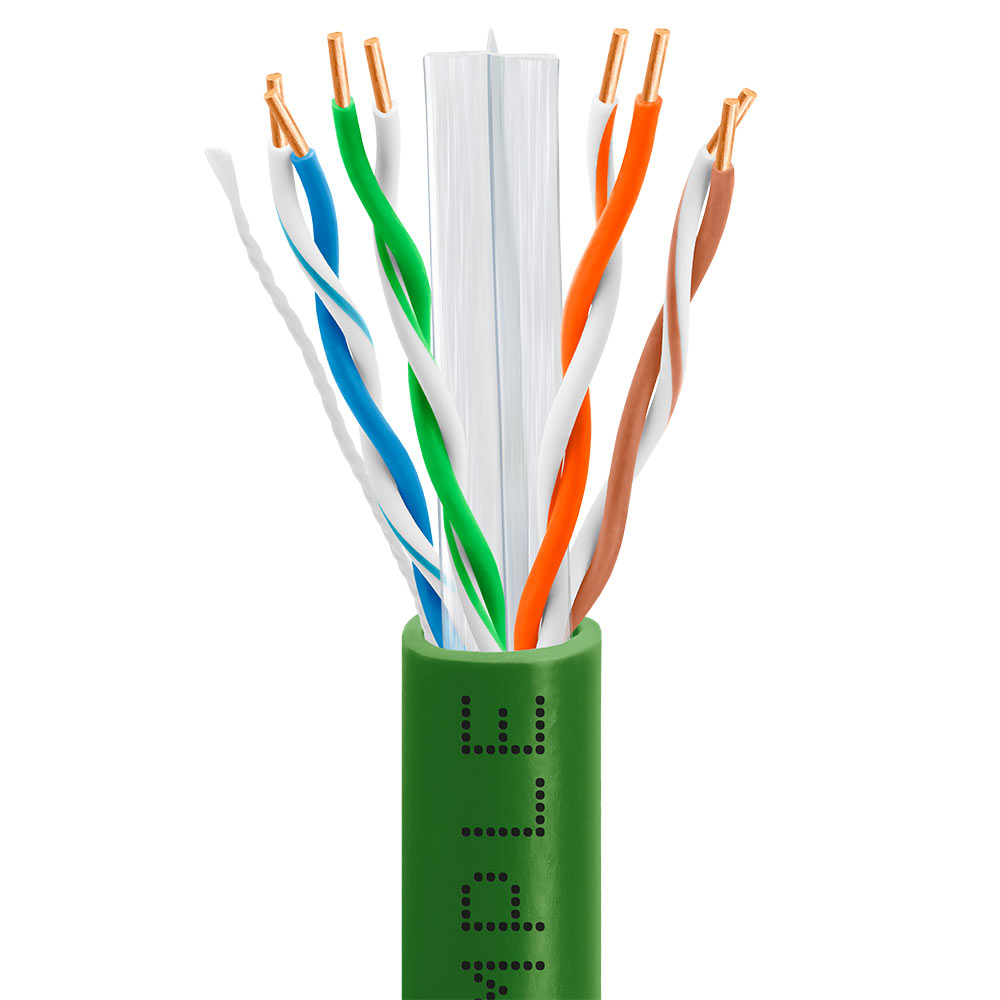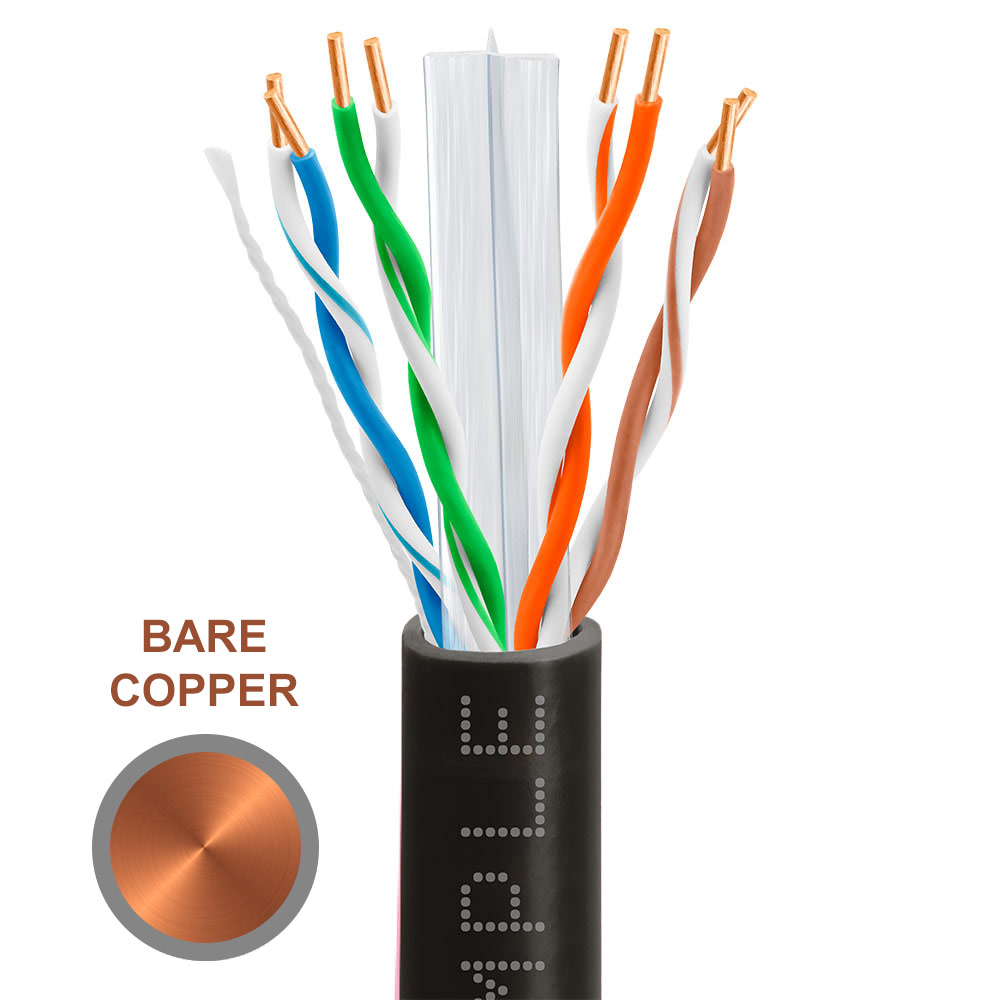All about Cat6 Bulk Cables
In the very first networks, businesses only had the option to purchase and set up a network using Category 5 or Cat5 cables. The Cat5 cables always underperformed. They never lived up to the expectations of their users. Back then, the Cat5 cable was the only network connection option people had.
Over time, business requirements changed and as a result, so did their communication requirements. Businesses now need fast connectivity in order to keep in contact with all of the required parties. Thanks to the advancements in internet technology, this speed requirement has been fulfilled. The Category 6 cable or Cat6 bulk cables emerged and have now become the industry standard, offering increased bandwidth, speed and reliability. The Cat6 cable is considered to be the fastest Ethernet cable that has ever been created.
What is a Cat6 Cable?
Cat6 is a data cable that gives its users the ability to create an Ethernet network in order to connect to the internet and communicate with other people on the same network. Cat6 bulk cables are primarily used for computer networking; however, they are also commonly used for telephony, security systems and audio and video connectivity. Cat6 bulk cables run between jacks for computers, routers and Ethernet capable devices connected on a LAN (local area network).
The cables are typically sold in white or blue color and are labeled with the name Cat6 on them. The connecters used on the cable are RJ-45. These connecters look a lot like the telephone jacks found on the back of a telephone or modem. The Cat6 bulk cables have revolutionized the internet connectivity world. There are many benefits of using a Cat6 cable. Some of the most common and outstanding benefits are discussed below in detail:
Radiation Shielding
In comparison to a traditional Cat5 cable, the Cat6 bulk cables have a better pliability of reducing network noise generated from wires overlapping, electromagnetic radiation and electrical interferences. This is partly due to the fact that the cable is insulated with a special type of polyvinyl chloride insulation sheet, which helps protect data packets from being lost during the transmission process.
Speed
Modern businesses require lightning fast speed on their network connections. On a network the speed is measured in either hertz or megahertz. On an Ethernet cable, the speed is measured by the rate at which data can travel from one end of the cable to the other.
Cat6 bulk cables are able to offer up to 250 Megahertz (MHz) of speed. This allows them to be a very plausible option for high-speed data transfer between other computers and devices on the network or internet users. The cables can also be used on a Fast Ethernet, Gigabit Internet and even a 10 Gigabit Internet network.
Cable Strands
Cat6 bulk cables are made up of four twisted strands of either 22 or 24 American wire gauge wires. Every wire has a unique shielding color which makes them easier to assemble. The wires can be connected into a T568B, T568A or RJ61 Ethernet connector.
Normal Impedance
Impedance is a measurement which evaluates the level or internal resistance during data transfer. The higher the impedance, the more interference and data packet loss can be expected. A Cat6 cable has an impedance of about 100 ohms which is much lower than what the Cat5 cable could provide.
Installation Lengths
Cat6 bulk cables do have certain limitations because of the length of the cables. Higher bandwidth networks require a lot of speed. This means if the network is supposed to work at fast speeds, the cable lengths must be relatively shorter to maintain high performance. Typically, for a high-speed internet network, the maximum Cat6 cable length should be 330ft. In a 10 Gigabit network, the Cat6 cable length should only be 180ft.
Some people think that there is very little difference between the Cat5 and Cat6 bulk cables. They agree that there are subtle differences but nothing worth changing the entire network wiring over. Contrary to popular belief, there are several differences that exist between Cat5 and Cat6 bulk cables. Some of the main differences are mentioned below:
Faster Speeds
When the Cat5 cables released, the speed requirement provided by the cables were sufficient. In that day and age, 1GC network speeds were very rare. In fact, most network cards back then were only capable of running at 10MB or 100MB connections. As business requirements changed, so did the need for network speed. According to a survey, the average network speed requirements double every 1 and a half years.
Cat6 bulk cables were created to match the speed requirements of today’s modern businesses. Cat6 cables are able to provide better speeds and improved efficiency. They are very user friendly, which allows amateur networkers to set them up with relative ease. By comparison, the Cat5 series cables were only able to provide speeds up to 350MB (Cat5e cables). However, the Cat6 bulk cables are able to provide speeds of up to 1000MB.
Improved Signal-to-Noise Ratio
Network noise is the result of electrical interference within the cables. Noise on a network can result in the data packet loss or corruption. The higher the signal-to-noise ratio, the better the network performance. When compared to a Cat5 cable, the Cat6 cables are able to produce a much better signal-to-noise ratio.
Longitudinal Separator
Although both Cat5 and Cat6 bulk cables are created using four twisted copper wires, only a Cat6 cable uses longitudinal separators. These separators are used to keep the four wires within the cable separated from each other therefore resulting in improved data transmission, less interference and minimal crosstalk.
Transmission Performance
A traditional Cat5 cables transmission performance is only limited to about 100MHz. Such slow performance can cause corruption of data along with other problems on a business or home network, especially when transferring downloading or uploading large amounts of data. Cat6 bulk cables are able to provide a transmission speed up to 200MHz. This enables the user to get faster output and reduced network problems.





